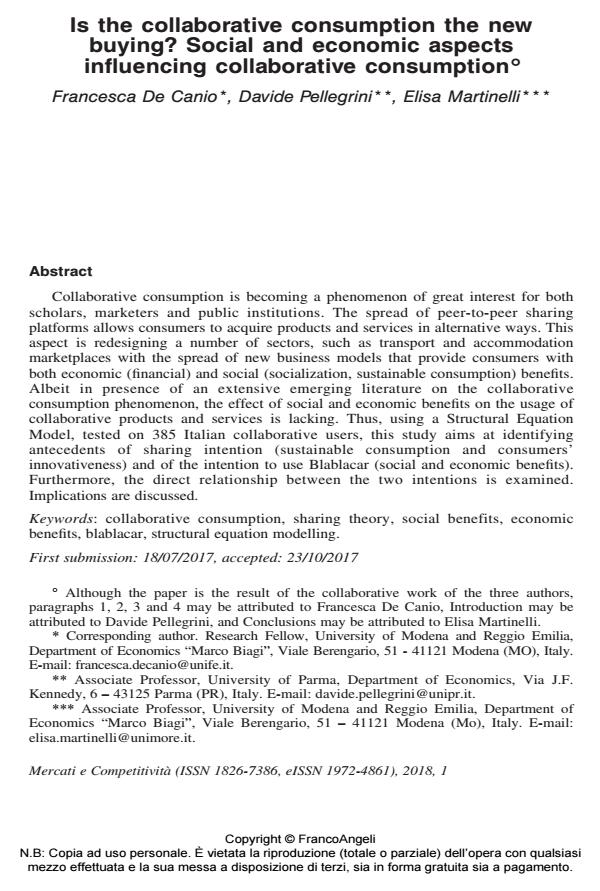Is the collaborative consumption the new buying? Social and economic aspects influencing collaborative consumption
Journal title MERCATI & COMPETITIVITÀ
Author/s Francesca De Canio, Davide Pellegrini, Elisa Martinelli
Publishing Year 2018 Issue 2018/1
Language English Pages 20 P. 19-38 File size 1173 KB
DOI 10.3280/MC2018-001003
DOI is like a bar code for intellectual property: to have more infomation
click here
Below, you can see the article first page
If you want to buy this article in PDF format, you can do it, following the instructions to buy download credits

FrancoAngeli is member of Publishers International Linking Association, Inc (PILA), a not-for-profit association which run the CrossRef service enabling links to and from online scholarly content.
Collaborative consumption is becoming a phenomenon of great interest for both scholars, marketers and public institutions. The spread of peer-to-peer sharing platforms allows consumers to acquire products and services in alternative ways. This aspect is redesigning a number of sectors, such as transport and accommodation marketplaces with the spread of new business models that provide consumers with both economic (financial) and social (socialization, sustainable consumption) benefits. Albeit in presence of an extensive emerging literature on the collaborative consumption phenomenon, the effect of social and economic benefits on the usage of collaborative products and services is lacking. Thus, using a Structural Equation Model, tested on 385 Italian collaborative users, this study aims at identifying antecedents of sharing intention (sustainable consumption and consumers’ innovativeness) and of the intention to use Blablacar (social and economic benefits). Furthermore, the direct relationship between the two intentions is examined. Implications are discussed.
Keywords: Collaborative consumption, sharing theory, social benefits, economic benefits, blablacar, structural equation modelling.
Francesca De Canio, Davide Pellegrini, Elisa Martinelli, Is the collaborative consumption the new buying? Social and economic aspects influencing collaborative consumption in "MERCATI & COMPETITIVITÀ" 1/2018, pp 19-38, DOI: 10.3280/MC2018-001003